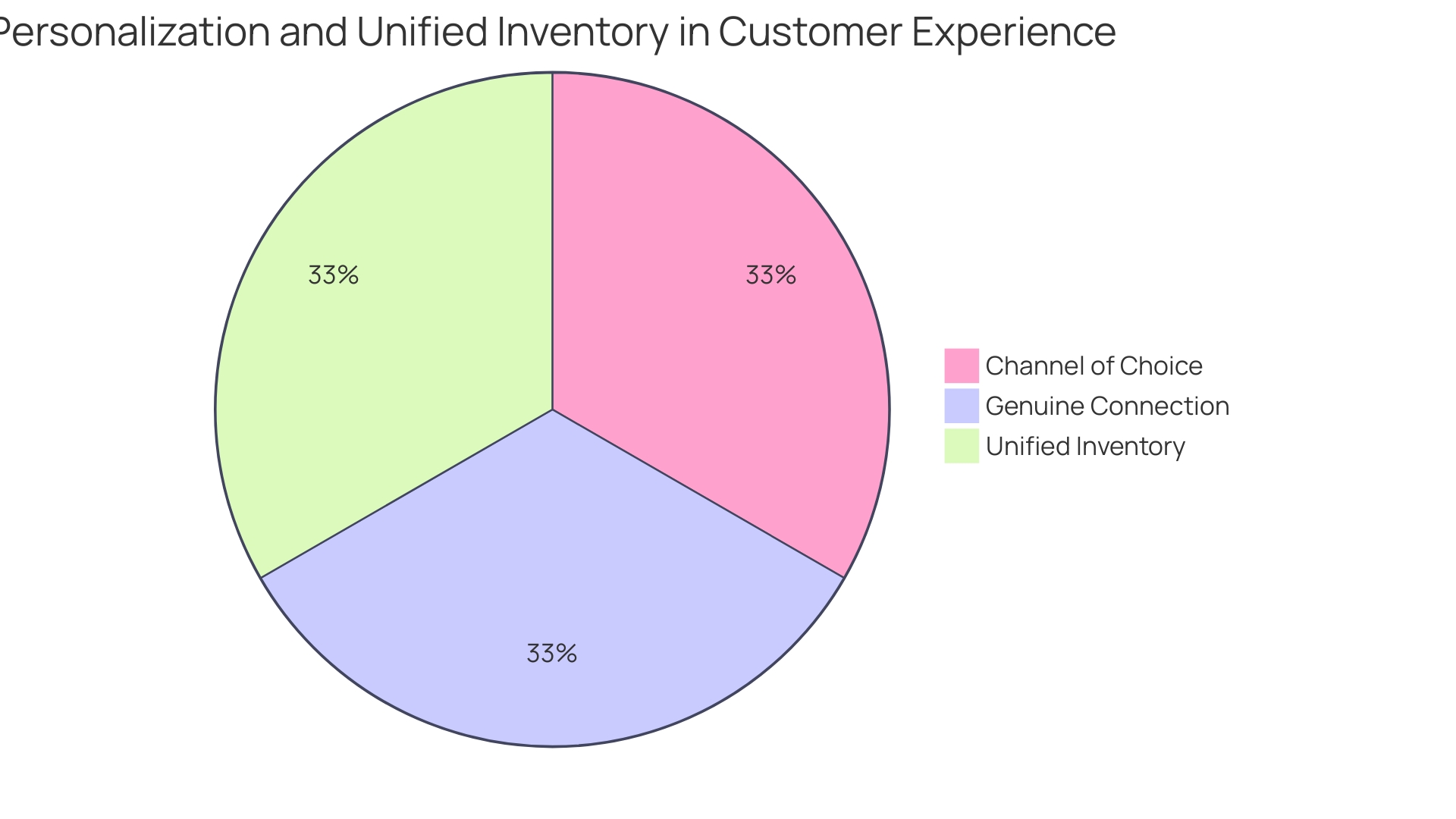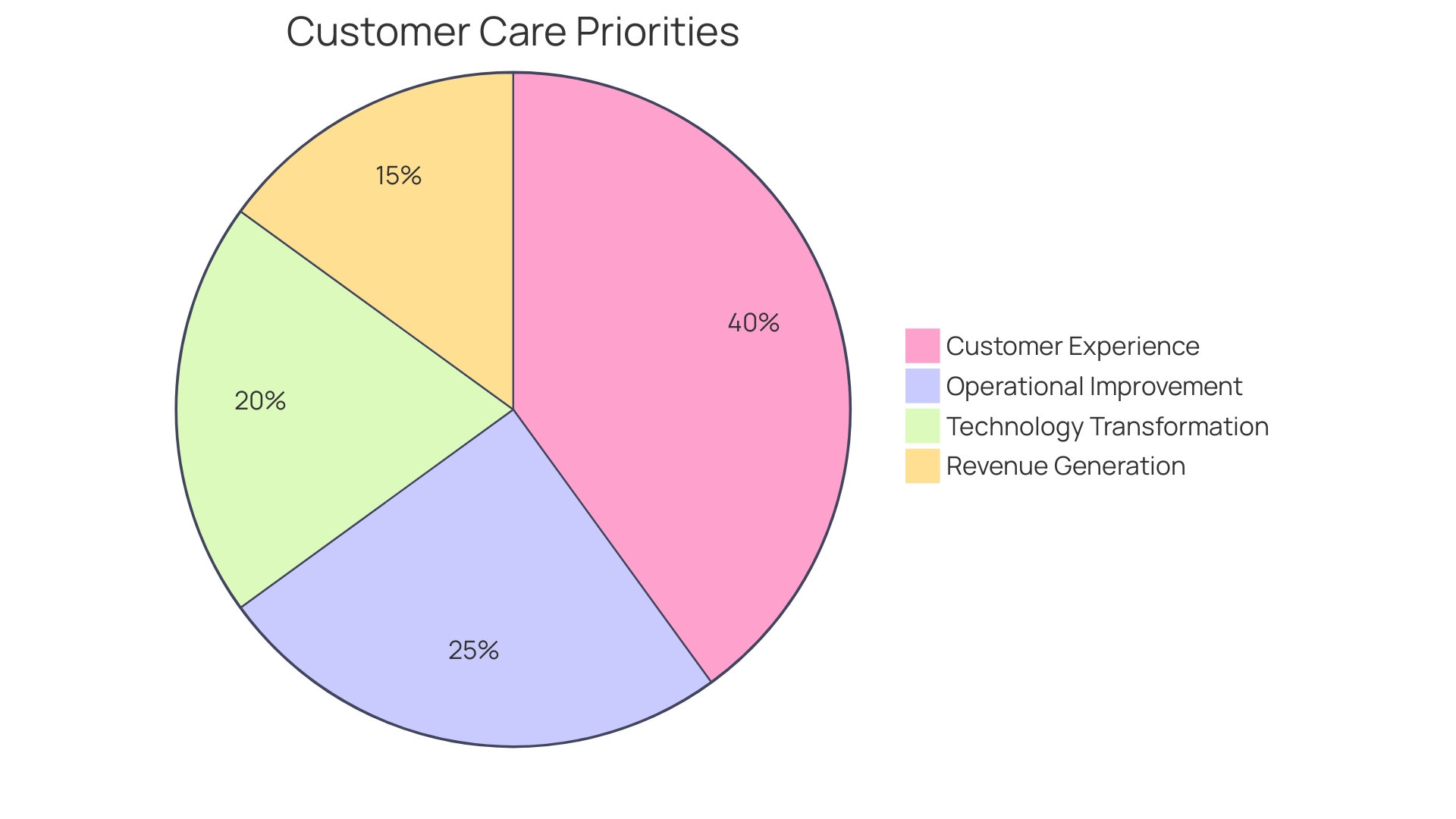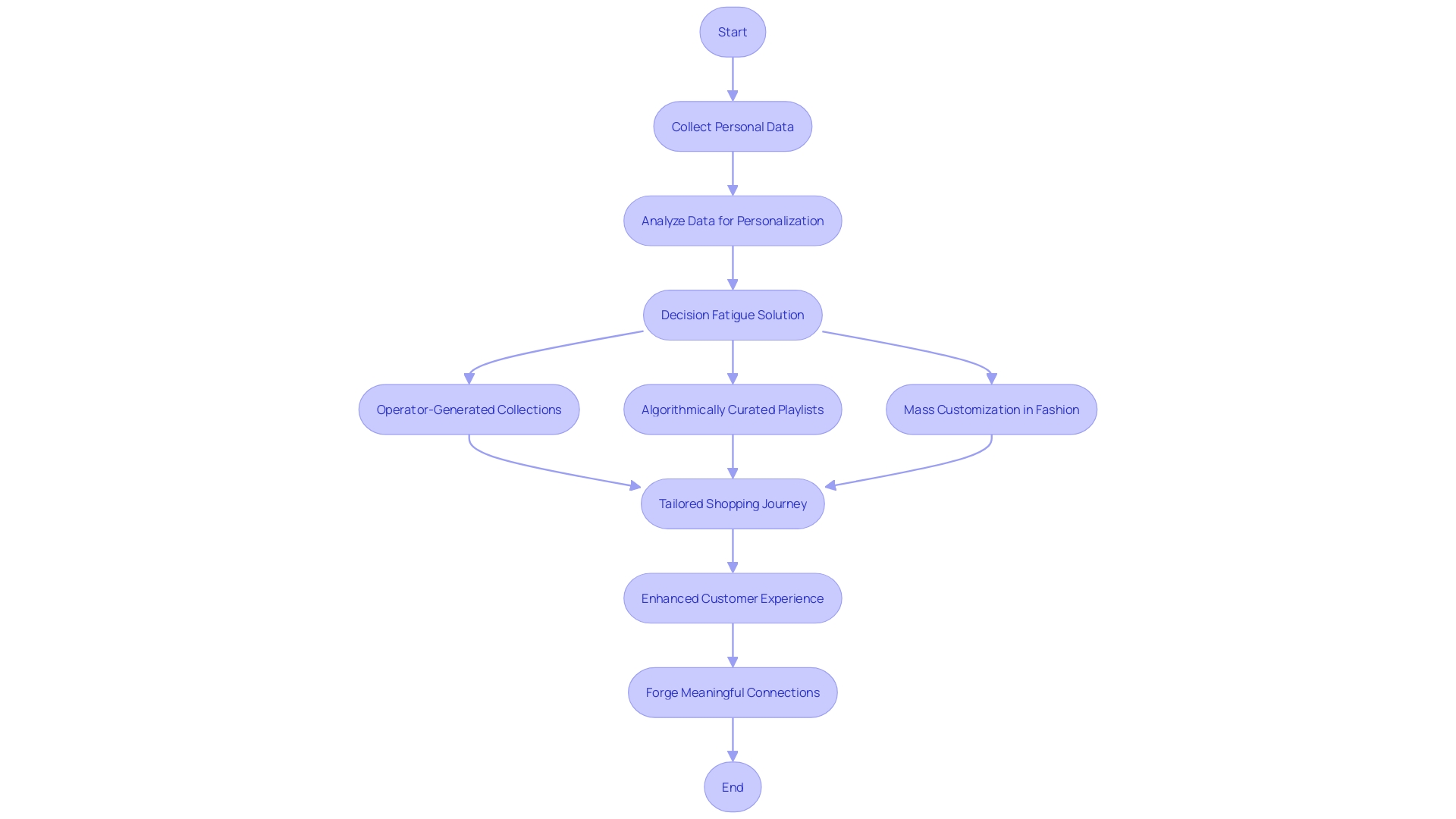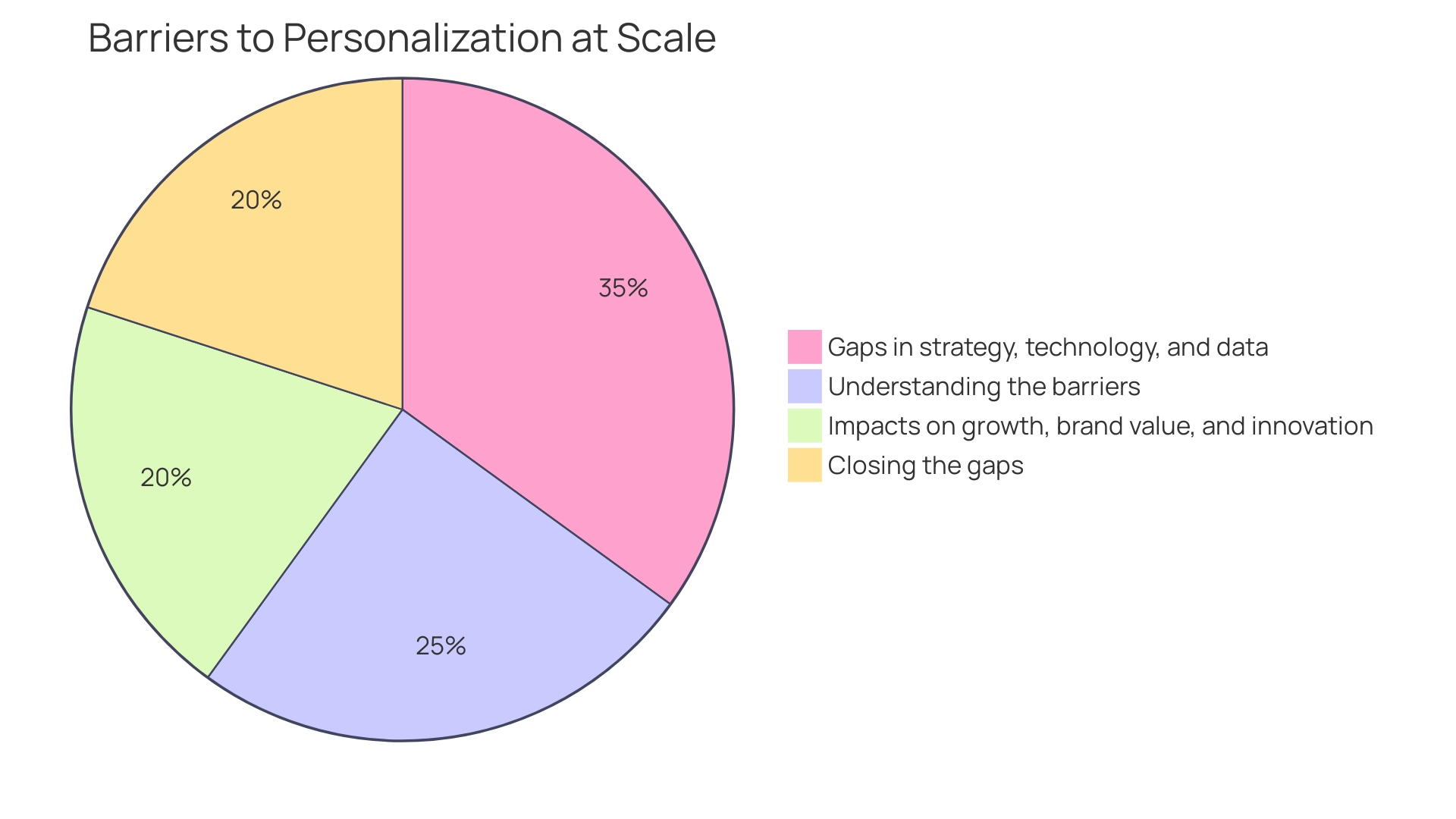Introduction
In the ever-evolving world of e-commerce, customization and personalization have emerged as key strategies to enhance the shopping experience and forge deeper connections with customers. But what exactly do these terms mean, and how do they differ? Customization empowers shoppers to modify products according to their preferences, while personalization utilizes data and artificial intelligence to present tailored recommendations.
While customization puts the customer in control, personalization takes a more passive approach, leveraging technology to curate a unique shopping journey. These strategies are not just passing trends, but essential components of successful online retail strategies. By integrating customization and personalization, businesses can create experiences that are not only relevant but genuinely personal, leading to increased sales and customer loyalty.
As we delve into the world of e-commerce in 2024, the fusion of these two strategies is becoming a cornerstone of the industry, paving the way for deeper connections and meaningful interactions with customers.
Definitions: Customization and Personalization
Customization and personalization in e-commerce are akin to having a discerning shop assistant who not only knows your name but also your preferences, ensuring every interaction is tailor-made just for you. They serve a common purpose: to craft a shopping experience that resonates on a personal level with each customer. But it's important to distinguish the subtle yet significant differences between the two.
Customization allows shoppers to take the helm and modify products to their liking, whether it's selecting a preferred color or adding a monogram. It's a proactive approach where the customer's choices directly influence the final product. For instance, operator-generated collections in e-commerce platforms let users curate their shopping experience by choosing from a selection of popular or seasonal items.
On the flip side, personalization is a more passive experience for the user, but no less impactful. It leverages data and artificial intelligence to present items and recommendations that align with the customer's unique tastes and shopping history. Consider how Spotify's homepage dedicates a substantial portion to playlists that are algorithmically curated based on users' listening habits, accounting for nearly half of their listening time. This concept is deftly applied in e-commerce, where AI helps to sift through vast product catalogs to highlight items that are likely to captivate individual shoppers.
Recent advancements in retail technology, such as the launch of checkout-free stores using Zippin technology at Dublin Airport, underscore the significance of personalization. These stores offer a frictionless shopping experience, where the technology intuitively understands and caters to the customer's needs without any direct input required from them. This seamless interaction is a testament to the power of personalization in modern retail.
As we navigate the bustling landscape of e-commerce in 2024, the fusion of customization and personalization is not just a trend but a cornerstone of successful online retail strategies. They are not mere selling tactics but pathways to forging deeper connections with customers by providing experiences that are not just relevant but also genuinely personal.
Key Distinctions Between Customization and Personalization
The e-commerce landscape is rapidly evolving, with businesses constantly searching for strategies that will offer them an edge. Understanding the distinction between customization and personalization is paramount in this quest. Customization grants customers the power to tailor their shopping experience by choosing specific attributes of a product or service, aligning with the growing demand for control over their purchases. Personalization, on the other hand, is where the company tailors the experience or product to the individual customer based on collected data, enabling a unique and targeted shopping journey.
As the digital marketplace continues to expand, retailers are investing heavily in personalization tools. These tools are not just a passing trend; they are a response to customer expectations for more meaningful and relevant shopping experiences. Indeed, with 81% of consumers and business buyers emphasizing that the experience a company provides is as important as its products or services, the stakes for e-commerce businesses have never been higher. Furthermore, the feeling that companies are falling short of personalization expectations is widespread, with 35% of shoppers expressing dissatisfaction in this area according to CM's research.
In the competitive arena of e-commerce, companies like Zara have set a benchmark by integrating artificial intelligence not just in consumer analytics but across their supply chain and inventory management. This holistic use of AI fosters a level of responsiveness and customer engagement that keeps them at the forefront of the industry. Similarly, the convergence of physical and digital shopping, the so-called 'phygital' experience, is becoming a norm, necessitating brands to adopt a ubiquitous presence across all channels.
As we look ahead, the fusion of innovative technologies and strategic partnerships, particularly with startups, is poised to drive further advancements in e-commerce. For businesses to thrive, they must not only keep pace with these developments but also anticipate and respond to the changing needs and preferences of their customers, making personalization a critical element to master. The goal is to create a shopping environment that is as close to an in-store experience as possible, complete with the personal touch of engaging with an associate, all while balancing the convenience and efficiency of online shopping.

Customization: User-Initiated Preferences
E-commerce customization is a dynamic feature that enables customers to tailor their shopping experience by making specific selections and adjustments to their purchases. This customer-centric approach not only allows shoppers to define product specifications, choose preferred colors, or inscribe personalized messages, it also cultivates a sense of value and individual attention, much like a savvy shop assistant who knows exactly what you're looking for.
The significance of customization in e-commerce is highlighted by the success of platforms that utilize personalized content to engage users. For instance, Spotify dedicates a substantial portion of its homepage to playlists that are curated by both staff and algorithms. These playlists, particularly the ones generated by algorithms based on users' listening habits, are responsible for nearly half of the total listening time on the platform. This indicates that when customers are presented with a selection that resonates with their personal tastes, engagement increases dramatically.
Customization also addresses the challenges of product variety and manufacturing costs. Professors Aydin Alptekinoglu and Dan Guide explored the concept of mass customization in fashion, which aims to cater to individual consumer tastes on a large scale. Their research suggests that this approach can delay the disposal of clothing, a significant step towards sustainability in an industry often criticized for its fast fashion practices. By offering personalized products, businesses can reduce the rate at which cheap, synthetic clothes are discarded, ultimately benefiting both the consumer and the environment.
In the realm of e-commerce, artificial intelligence (AI) is a game-changer, enabling businesses to create more personalized shopping experiences. Elizabeth Tobey from NICE highlights the importance of meeting customers on their preferred channels, emphasizing that today's consumers demand interactions that are both convenient and personalized. This shift towards a unified customer experience, where every decision and interaction is centered around the customer's needs, is transforming the e-commerce landscape.
In summary, e-commerce customization is not just about enhancing product offerings—it's about providing an experience that feels personalized, relevant, and genuine, which leads to increased sales and customer loyalty. As we observe the trends shaping e-commerce, it's evident that the integration of customization and personalization is becoming more than a luxury—it's an essential component of a successful online retail strategy.
Personalization: System-Driven Tailoring
Personalization in e-commerce has evolved into a sophisticated process of delivering individualized experiences to users by harnessing data and advanced algorithms. Unlike basic customization, which allows users to select preferences, personalization delves into customer behavior to suggest products, content, and recommendations that resonate with their unique needs and desires. The goal of personalization is to craft a seamless and intuitive shopping journey, enhancing the overall satisfaction of each customer. As revealed in a report by Cuker Agency, an overwhelming majority of both business buyers and consumers—81% and 79% respectively—consider the shopping experience as critical as the products or services offered. In light of this, a staggering 35% feel that their personalization expectations are not being met, with 57% still receiving irrelevant communication from retailers, highlighting a significant opportunity for improvement in this domain.
Recent advancements in technology have propelled personalization to the forefront of retail trends. New personalization technologies are emerging, but their application is shaped by customer preferences and regulatory constraints. One such technology is Artificial Intelligence (AI), which is revolutionizing the e-commerce landscape by facilitating shopping experiences that are more personalized and aligned with each customer's profile. In the realm of fashion, the concept of mass customization is gaining traction as a means to cater to individual tastes on a large scale, potentially reducing the environmental impact of fast fashion by extending the lifecycle of clothing. This approach, which involves offering a variety of products without incurring significant initial manufacturing costs, could be a game-changer for the industry.
In the ever-evolving digital marketplace, where making authentic connections is paramount, personalization is akin to the familiarity of a favorite coffee shop where the staff knows your order before you speak. Achieving such a level of personalization begins with cultivating a customer-centric culture, where every facet of the business is focused on delivering a superior customer experience. Brands that succeed in understanding and anticipating customer needs not only differentiate themselves but also foster loyalty in a crowded market. Therefore, the investment in personalization technology and strategies is not only warranted but essential for retailers aiming to thrive in the digital age.

Examples of Customization in E-commerce
In the realm of e-commerce, customization manifests through various innovative approaches, aiming to cater to individual consumer preferences. For instance:
- Operator-generated collections are meticulously curated by human experts, showcasing an array of popular merchandise, seasonal offerings, or theme-based selections that resonate with shopper interests.
- Algorithmically curated playlists, akin to Spotify's model, utilize user listening histories to recommend music, offering a parallel in e-commerce by suggesting products based on past shopping behaviors.
- Mass customization in fashion, a concept explored by scholars like Aydin Alptekinoglu and Dan Guide, emphasizes the balance between individualized consumer tastes and large-scale production, which could potentially reduce the quick turnover inherent in fast fashion and its environmental impact.
Customization is not a mere sales tactic; it's about forging a meaningful connection with consumers, as Elizabeth Tobey of NICE points out. It offers a tailored shopping journey, akin to being greeted by name in your favorite coffee shop, which can lead to enhanced customer experiences, increased loyalty, and higher conversion rates.
By integrating personalization into website design, businesses can mirror the care of a bespoke suit or a custom-built car, ensuring each interaction is uniquely suited to the customer's preferences. This approach is further substantiated by the need for unified inventory visibility, ensuring seamless omnichannel experiences that accommodate the contemporary shopper's desire for flexibility and personal relevance.

Examples of Personalization in E-commerce
E-commerce has evolved into a platform that's not just about selling products, but about creating personalized experiences that resonate with customers. Personalized shopping is no longer a luxury; it's what customers expect. A staggering 81% of business buyers and 79% of consumers consider the shopping experience as crucial as the product or service offered, according to a Cuker Agency Report. However, 35% of shoppers feel that companies are not meeting their personalization expectations, and 57% report receiving irrelevant messages from retailers, as CM's research highlights.
Effective personalization strategies are multifaceted, often involving operator-generated collections that are manually curated to include popular, seasonal, or theme-specific items. These collections are a testament to the importance of understanding customer preferences and providing a tailored experience.
The e-commerce industry is witnessing a surge in customer demand for personalization, paralleled by an increased interest from companies in personalization tools and retail software development. Investments in improving personalization can be costly, but they are justified by the potential for enhanced customer satisfaction and loyalty.
Innovations in the e-commerce space are rapidly emerging. For instance, the blending of physical and digital channels, known as 'phygital,' has been embraced by consumers who seek the convenience of online shopping with the assurance of in-store availability. This trend was accelerated by the challenges of the COVID pandemic and is now a staple expectation, as Keith Kirkpatrick, research director at The Futurum Group, emphasizes.
The journey to personalization began with technological advancements, such as the first banner ad and the invention of cookies for tracking user preferences. Today, personalization is about creating genuine connections, reminiscent of walking into a favorite coffee shop where they know your order by heart, a sentiment echoed by industry experts.

Impact on User Experience
Unlocking the potential of customization and personalization in e-commerce is fundamental to enhancing user experience. The rapidly evolving retail landscape showcases a consumer-driven demand for tailored shopping experiences, a trend strongly supported by the surge in personalization technologies. According to Medallia's research, there's a direct correlation between personalization and customer satisfaction, with an overwhelming majority of consumers willing to pay more for customized experiences. However, only a fraction report experiencing high levels of personalization in retail and hospitality, signifying a gap that businesses must bridge to meet and exceed consumer expectations.
The 'personalization paradox' is another facet that retail and e-commerce must navigate, balancing the convenience of personalized services with the growing concerns over data privacy and security. Consumers increasingly view their data as an asset they own, leading to a shift in how companies approach data collection and usage. Amidst this backdrop, innovative e-commerce solutions are emerging, shaped by partnerships between startups and established firms, driving forward the industry with a focus on consumer-centric personalization strategies.
In the dynamic realm of e-commerce, staying ahead means understanding and implementing these personalized approaches. Artificial intelligence is at the forefront of this revolution, enabling businesses to offer shopping experiences attuned to individual customer preferences. The key to success lies in creating a customer-centric culture, where every interaction is an opportunity to deliver a personalized and memorable experience, fostering loyalty and driving sales.
Challenges and Considerations for Each Approach
E-commerce businesses harnessing customization and personalization have the potential to significantly enhance the shopping experience. Customization allows customers to create their ideal products, selecting attributes like color, size, or material. Personalization, on the other hand, involves leveraging data to present tailored recommendations and content that resonate with individual shopper preferences.
Operator-generated collections, for instance, are an example of customization, where items are manually curated to include popular, seasonal, or theme-based products. This manual curation is akin to creating a unique customer journey for each shopper. Meanwhile, personalization is exemplified by Zara's approach, where artificial intelligence (AI) is not only used for consumer behavior analytics but across the supply chain. This advanced use of AI, including real-time analytics and machine learning, enables Zara to adjust inventory levels dynamically and maintain a competitive edge by offering a more responsive and engaging customer experience.
These strategies align with the current trends in e-commerce, where AI is a driving force behind creating shopping experiences that feel personal and relevant. It's reported that businesses investing in such technologies can see substantial growth and improved customer satisfaction. Moreover, the growth of e-commerce has led to an increase in the variety and accessibility of products, as seen in markets like beverages and food, where consumers can now easily purchase a wide range of items online.
Despite the promise of customization and personalization, they are not without their challenges. Retailers must carefully balance the investment in technology with the consistent delivery of customer experience and brand value. As e-commerce continues to evolve, it's essential for businesses to stay informed about the latest trends and technologies that are shaping the future of online shopping, ensuring they can adapt and thrive in an increasingly competitive marketplace.
Choosing the Right Strategy for Your E-commerce Business
In the realm of e-commerce, differentiating your offerings through customization and personalization can significantly enhance customer experience and loyalty. Customization allows customers to tailor products or services to their specific preferences, which can be a unique selling proposition for your business. On the other hand, personalization involves leveraging customer data to provide a more individualized shopping experience.
To navigate these strategies effectively, consider market demand. Utilize tools like Google Trends and social media analysis to gauge consumer interest and anticipate market shifts. Understanding these trends can inform whether a more personalized approach or a customizable product range would resonate more with your customer base.
Additionally, it's crucial to assess the competitive landscape. Identifying your direct competitors and analyzing their strategies can reveal opportunities for differentiation. Whether through advanced personalization techniques or offering bespoke product options, staying ahead of the competition is key.
In the digital marketplace, businesses must adapt to evolving customer expectations. Recent insights highlight a growing desire for personalization; consumers seek an online shopping experience akin to the attentive service of in-store interactions. Therefore, ensuring your e-commerce platform provides a seamless, personalized, and customer-centric experience is paramount.
Moreover, the McKinsey report emphasizes the financial impact of personalization in e-commerce, noting that US businesses could unlock significant revenue by enhancing their personalization efforts. With 75% of business leaders acknowledging personalization as a crucial success factor, integrating this into your strategy can elevate your brand image and customer satisfaction.
In summary, selecting the right approach between customization and personalization hinges on understanding your market, audience preferences, and competitive environment. By aligning these insights with your business goals and available resources, you can carve out a unique position in the e-commerce landscape and foster a stronger connection with your customers.
Conclusion
In conclusion, customization and personalization are essential strategies in e-commerce. Customization empowers shoppers to modify products, while personalization leverages data and AI to provide tailored recommendations. These strategies are not passing trends but crucial components of successful online retail.
Customization allows customers to take control, leading to enhanced experiences and increased loyalty. Personalization delves into customer behavior, crafting seamless journeys and enhancing satisfaction. AI-driven personalization technologies are revolutionizing e-commerce.
The fusion of customization and personalization is essential for success. By integrating these strategies, businesses create relevant and genuinely personal experiences, driving sales and loyalty. Balancing technology investment with customer experience is crucial.
To choose the right strategy, consider market demand, assess the competition, and adapt to evolving customer expectations. Aligning insights with goals and resources helps carve a unique position and foster strong customer connections.
In summary, customization and personalization are crucial in e-commerce. By leveraging these strategies effectively, businesses create personalized experiences that enhance customer satisfaction, loyalty, and success in the digital age.





